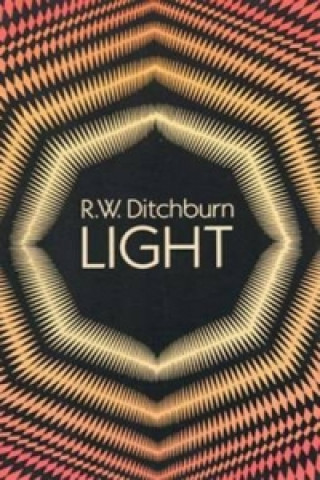
Kód: 02569656
Light
Autor R.W. Ditchburn
CHAPTER I HISTORICAL INTRODUCTION 1.1. The Scientific Picture 1.6. Light in Relation to Biological Science 1.9. Ligh in Relation to Physical Science 1.10. Waves or Corpuscles 1.11. Rays of Light 1.12. Interference 1.13. Developmen ... celý popis
- Jazyk:
 Angličtina
Angličtina - Vazba: Brožovaná
- Počet stran: 736
Nakladatelství: Dover Publications Inc., 2003
- Více informací o knize

Mohlo by se vám také líbit
-
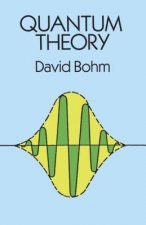
Quantum Theory
782 Kč -

Quantum Mechanics
1681 Kč -
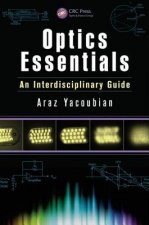
Optics Essentials
2908 Kč -

Queen Hortense
829 Kč -

Quantum Optics for Beginners
3764 Kč -

Kinfolk Volume 13
435 Kč -

Ritter Kochbuch
389 Kč
Informovat o naskladnění knihy
Zadejte do formuláře e-mailovou adresu a jakmile knihu naskladníme, zašleme vám o tom zprávu. Pohlídáme vše za vás.
Více informací o knize Light
 Anotace knihy
Anotace knihy
CHAPTER I HISTORICAL INTRODUCTION 1.1. The Scientific Picture 1.6. Light in Relation to Biological Science 1.9. Ligh in Relation to Physical Science 1.10. Waves or Corpuscles 1.11. Rays of Light 1.12. Interference 1.13. Development of the Wave Theory 1.14. Electromagnetic Theory 1.15. The Electromagnetic Spectrum 1.16. Photons 1.17. Relativity Theory 1.18. Modern Quantum Theory EXAMPLES [1(i)-l(vi)] CHAPTER II WAVE THEORY-INTRODUCTION 2.1. Fundamental Ideas 2.3. The Simple Harmonic Oscillator 2.4. Experimental Observations 2.5. Equations of Motion EXAMPLES [2(i)-2(vi)] EXAMPLES [2(vii) and 2(viii)] 2.8. Vector Representation of Simple Harmonic Motion 2.9. Equation of Propagation-One Dimension 2.11. Wavelength and Wavelength Constant 2.12. Phase EXAMPLES [2(ix)-2(xi)] 2.13. Propagation of Waves in Three Dimensions 2.14. Plane Waves 2.15. The Wave Equation EXAMPLES [ 2(xii)-2(xv)] 2.16. The Velocity of Propagation 2.17. Waves on a Rod 2.18. Transport of Energy and Momentum 2.20. Spherical Waves-Inverse Square Law 2.21. Photometry-Definitions 2.22. Doppler-Fizeau Principle 2.26. Representation of Wave Motion by Complex Quantities EXAMPLES [2(xvi)-2(xviii)] REFERENCES CHAPTER III WAVE THEORY-COMBINATION OF WAVE MOTIONS 3.1. Principle of Superposition 3.3. Addition of Simple Harmonic Motions 3.4. Algebraic Method 3.5. Vector Method EXAMPLES [3(i)-3(vi)] 3.8. Huygens' Principle 3.11. Reflection and Refraction at Plane Surfaces 3.13. Wave Theory of Reflection and Refraction 3.14. Reflection and Refraction at Spherical Surfaces: Mirrors and Lenses EXAMPLES [3(vii)-3(viii)] 3.17. Dispersion 3.20. Stationary Waves 3.22. Wiener's Experiment 3.26. Coefficient of Reflection-Normal Incidence 3.30. Optical Path Differnce 3.31. Corpuscular Theory of Reflection and Refraction EXAMPLES [3(ix)-3(xv)] CHAPTER IV REPRESENTATION OF LIGHT BY WAVE TRAINS OF FINITE LENGTH 4.1. Sources of Light. Types of Spectra 4.2. Line Spectra and Continuous Spectra 4.3. Band Spectra 4.4. Infra-red and Ultra-violet Spectra 4.5. Absorption Spectra 4.6. Atomic Oscillators 4.8. The Michelson Interferometer 4.10. Visibility of the Fringes 4.15. Waves of Irregular Profile 4.17. Fourier's Series 4.19. Fourier's Integral 4.21. The Gaussian Wave Group 4.25. Width of Spectral Lines 4.28. Propagation of a Wave Group in a Dispersive Medium 4.29. Group Velocity 4.32. Representation of Light by Wave Groups 4.33. White Light EXAMPLES [4(i)-4(ix)] REFERENCES APPENDIX IV A-Adjustment of the Michelson Interferometer APPENDIX IV B-Fourier Series and Fourier's Integral Theorem Analysis of a sharply limited Wave Train Profile for sharply limited Wave Band Distribution of Energy for a Damped Harmonic Wave The Gaussian Wave Group Progress of the Wave Group in a Dispersive Medium CHAPTER V INTERFERENCE 5.1. Law of Photometric Summation 5.3. Coherent and Non-coherent Beams of Light 5.5. Formation of Interference Fringes 5.7. Interference between Two Sources Side by Side 5.12. Interference produced by Thin Films 5.14. Visibility of the Fringes 5.16. Fringes as Loci of Constant Path Difference 5.17. Fringes of Constant Inclination 5.18. Fringes of Constant Optical Thickness 5.19. Newton's Rings EXAMPLES [5(i)-5(ix)] 5.20. Localization of Interference Fringes 5.22. Non-reflecting Films 5.24. High-efficiency Reflecting Films EXAMPLES [5(x)-5(xii)] 5.26. Interference with Multiple Beams 5.29. Fabry-Pérot Interferometer 5.30. Lummer-Gehrcke Plate 5.31. Edser-Butler Method of Calibrating a Spectrograph EXAMPLES [5(xiii)-5(xvi)] 5.32. Fringes of Superposition 5.34. Achromatic Fringes 5.36. Achromatic Systems of Fringes 5.40. Interference Filters EXAMPLES [5(xvii)-5(xix)] REFERENCES CHAPTER VI DIFFRACTION 6.1 General Character of the Observations 6.3. Fresnel and Fraunhofer Diffraction 6.5. Theory of Diffraction. The General Problem 6.10. Extension of the Concept of a Wave Group 6.12. Beam of Finite Width-One Dimension 6.13. St. Venant's Hypothesis 6.14. Beam restricted in Two Dimensions 6.15. Diffraction at a Rectangular Aperture 6.16. Diffraction at a Circular Aperture 6.17. Diffraction with a Slit Source 6.18. Diffraction by a Number of Similar Apertures 6.21. Babinet's Theorem 6.22. Diffraction by a Number of Circular Apertures or Obstacles 6.23. Young's Eriometer 6.24. Diffraction by Reflecting Screens 6.25. Diffraction by a Screen not Coincident with a Wave Surface 6.26. "Laws of Rectilinear Propagation, Reflection and Refraction" 6.27. Diffraction Gratings 6.28. The Functions f(U) and F(NW) 6.30. Distribution of Light among the Principal Maxima 6.31. Diffraction Grating Spectra 6.32. Overlapping of Orders 6.33. Gratings Ruled on Glass or Metal 6.36. Echelette Gratings 6.39. The Michelson Echelon Grating 6.40. The Michelson-Williams Reflecting Echelon 6.41. Theory of the Reflecting Echelon EXAMPLES [6(i)-6(x)] REFERENCES APPENDIX VI A-Kirchhoff's Diffraction Formula APPENDIX VI B-The Concave Grating CHAPTER VII HUYGEN'S PRINCIPLE AND FERMAT'S PRINCIPLE 7.1. Development of Huygens' Principle 7.2. Fresnel's Method EXAMPLES [7(i)-7(iv)] 7.5. Kirchhoff's Analysis 7.6. Elimination of the Reverse Wave 7.7. Diffraction at a Circular Apterture 7.8. Diffraction by a Circular Obstacle EXAMPLES [7(v)-7(viii)] 7.11. The Zone Plate 7.15. Fresnel's Integrals 7.17. Cornu's Spiral 7.21. Diffraction at a Straight Edge 7.22. Rectilinear Propagation 7.23. Fermat's Principle 7.26. Guoy's Experiment 7.27. Relation between Wave and Ray Optics 7.28. Ray and Wave Normals 7.29. Rays in Relation to Wave Groups 7.30. Fermat's Principle as a General Statement of the Laws of Ray Optics EXAMPLES [7(ix)-7(xvii)] REFERENCES CHAPTER VIII THE ACCURACY OF OPTICAL MEASUREMENTS 8.1. Imperfections in Images due to Diffraction 8.2. The Rayleigh Criterion 8.5. Limit of Resolution for a Telescope EXAMPLES [8(i)-8(iii)] 8.7. Limit of Resolution for the Eye 8.8. Useful and Empty Magnification 8.9. Resolving Power of a Prism Spectroscope 8.10. Resolving Power of a Grating Spectroscope 8.12. The Rayleigh Limit of Aberration 8.13. Accuracy of Measurements with Mirror and Scale EXAMPLES [8(iv)-8(xi)] 8.14. Development of the Theory of Resolving Power 8.18. Resolving Power of the Fabry-Pérot Etalon 8.19. Resolving Power of a Microscope 8.20. Resolution with Non-coherent Illumination 8.21. Abbe Theory of Resolution with Coherent Illumination 8.26. Representation of Detail in an Object seen through a Microscope 8.29. Phase-contrast Microscope 8.31. Optimum Magnification 8.32. Purity of a Spectrum obtained with White Light 8.36. Talbot's Bands EXAMPLES [8(xii)-8(xv)] REFERENCES CHAPTER IX MEASUREMENTS WITH INTERFEROMETERS 9.2. Classification by Type of Interference 9.4. Classification of Uses of Interferometer 9.5. The Testing of Optical Components 9.6. The Twyman-Green Interferometer 9.11. Fizeau Method 9.15. Multiple-beam Fringes 9.16. Testing of Mechanical Gauges EXAMPLES [9(i)-9(vii)] 9.18. The Double Interferometer 9.20. Measurement of Mechanical Displacements 9.21 Measurement of Refractive Index and of Small Differences of Index 9.29. The Jamin Refractometer EXAMPLES [9(viii)-9(xiii)] 9.30. Measurement of Wavelength 9.31. Comparison of Wavelengths by Coincidences 9.32. Comparison of Wavelengths by Exact Fractions EXAMPLES [9(xiv)-9(xvii)] 9.38. Comparison between Optical and Mechanical Standards of Length 9.44. Recent Work on Standards of Length 9.50. Investigations of Hyperfine Structure REFERENCES CHAPTER X THE VELOCITY OF LIGHT 10.1. Historical 10.2. General Review of Methods 10.3. Indirect Methods 10.5. Römer's Method 10.6. Fizeau's Method 10.7. Rotating-mirror Method 10.11. The Kerr Cell Optical-shutter Method 10.12. Discussion of Results 10.13. Group Velocity or Wave Velocity 10.15. Recent Work 10.18. Variation of Velocity with Refractive Index EXAMPLES [10(i)-10(v)] REFERENCES CHAPTER XI RELATIVISTIC OPTICS 11.1. Introduction 11.2. Relatve Velocity of Earth and Aether 11.4. The Michelson-Morley Experiment 11.7. The FitzGerald-Lorentz Contraction 11.8. Special Theory of Relativity 11.12. Dilation of Time and Contraction of Space 11.14. Experiments in which Source and Observer are in Relative Motion EXAMPLES [11(i)-11(v)] 11.15. Radial Doppler Effect 11.16. Transverse Doppler Effect-Dilation of Time EXAMPLES [11(vi)-11(vii)] 11.18. Reflection of Light by a Moving Mirror EXAMPLES [11(viii)-11(x)] 11.19. Aberraton Experiments 11.20. Experiments with a Moving Medium 11.21. General Theory of Relativity 11.23. Refraction of Light Rays in a Gravitational Field 11.24. Displacement of Lines in a Gravitational Field 11.25. Interference in a Rotating System EXAMPLE 11(xi) 11.29. The Nebular Red-shift 11.32. Relation between Mass and Energy 11.34. "Mass, Momentum and Energy of the Photon" REFERENCES CHAPTER XII POLARIZED LIGHT 12.1. Scalar and Vector Wave Theories 12.2. The Experiment of Malus 12.3. Definition of the Plane of Polarization 12.4. Brewster's Law 12.5. Polarization by Transmission 12.6. Double Refraction 12.10. Malus' Law 12.11. Methods of producing Plane-polarized Light 12.12. "Nicol, Foucault, and Glan-Thompson Prisms" 12.13. Polarization by Absorption 12.14. Uses of Polarizing Devices 12.15. Interaction of Beams of Plane-polarized Light 12.18. Circularly Polarized Light and Elliptically Polarized Light EXAMPLES [12(i)-12(vi)] 12.20. Huygens' Wave Surface in Crystals 12.21. Verification of Huygens' Wave Surface for Uniaxial Crystals 12.22. Transmission of Plane-polarized Light in a Thin Anisotropic Plate 12.25. Quarter-wave Plate 12.26. Two or more Plates in Series EXAMPLES [12(vii)-12(xiv)] 12.27. Analysis of Polarized Light 12.29. Representation of Unpolarized Light EXAMPLES [12(xv)-12(xvi)] 12.33. The Babinet Compensator 12.35. Rotatory Polarization 12.38. Dispersion of Birefringence and Optical Rotation EXAMPLES [12(xvii)-12(xxi)] 12.44. The Biquartz 12.45. Saccharimetry 12.48. Light Beats EXAMPLES [12(xxii)-12(xxx)] REFERENCES CHAPTER XIII THE ELECTROMAGNETIC THEORY 13.1. Development of the Theory 13.3. Mathematical Methods 13.4. Definitions of E and H 13.5. Definition of Charge Density and Current 13.6. Polarization of a Material Medium 13.7. Maxwell's Equations 13.8. Waves in an Insulating Medium 13.9. The Velocity of Light 13.10. Properties of Electromagnetic Waves EXAMPLES [13(i)-13(vii)] 13.11. Superposition of Electromagnetic Waves 13.12. Representation of Polarized Light 13.13. Energy of the Electromagnetic Field 13.14. Poynting's Theorem 13.15. Momentum of the Electromagnetic Waves EXAMPLES [13(viii)-13(x)] REFERENCES APPENDIX XIII A-Representation of the Electromagnetic Field by Potentials Analysis of the Electromagnetic Field Number of Standing Waves between w and w + dw APPENDIX XIII B-Radiation from a Dipole Scattering by Free Electrons Scattering by Bound Electrons Multipole Radiation CHAPTER XIV THE ELECTROMAGNETIC THEORY OF REFLECTION AND REFRACTION 14.1. Boundary Conditions 14.2. Laws of Reflection and Refraction 14.8. Reflection Coefficients 14.9. Degree of Polarization 14.10. Rotation of the Plane of Polarization 14.11. Change of Phase on Reflection EXAMPLES [14(i)-14(iv)] 14.12. Stationary Waves EXAMPLES [14(v)-14(vi)] 14.15. Total Reflection EXAMPLES [14(vii)-14(x)] 14.16. Disturbance in the Second Medium 14.17. Experimental Test of the Theory of Reflection and Refraction REFERENCES CHAPTER XV THE ELECTROMAGNETIC THEORY OF ABSORPTION AND DISPERSION 15.5. Transmission of Light in an Absorbing Medium EXAMPLES [15(i)-15(iv)] 15.6. Reflection of Light by an Absorbing Medium 15.7. Reflection at Normal Incidence EXAMPLE [15(v)] 15.8. Reflection at Oblique Incidence 15.10. Principal Angle of Incidence 15.11. Principal Azimuth 15.12. Comparison of Theory and Experiment EXAMPLE [15(vi)] 15.13. Optical Constants of Metals 15.18. Dispersion Theory. Dielectric Media 15.24. Dispersion in Regions of Small Absorption 15.25. Dispersion of Gases in Regions remote from Absorption Lines 15.26. Molecular Refractivity 15.27. Region of Absorption 15.28. Measurement of the f-Value 15.30. Absorption in Liquids and Solids 15.31. "The "Reststrahlen" 15.32. Dispersion Formul
 Parametry knihy
Parametry knihy
Zařazení knihy Knihy v angličtině Mathematics & science Physics Optical physics
- Plný název: Light
- Autor: R.W. Ditchburn
- Jazyk:
 Angličtina
Angličtina - Vazba: Brožovaná
- Počet stran: 736
- EAN: 9780486666679
- ISBN: 0486666670
- ID: 02569656
- Nakladatelství: Dover Publications Inc.
- Hmotnost: 756 g
- Rozměry: 215 × 136 × 38 mm
- Datum vydání: 28. March 2003
Oblíbené z jiného soudku
-
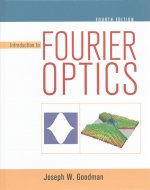
Introduction to Fourier Optics
3526 Kč -
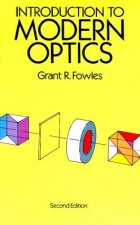
Introduction to Modern Optics
454 Kč -

Principles of Optics
2083 Kč -

The Binocular Handbook
1551 Kč -

Computational Simulation in Nanophotonics and Spectroscopy
1533 Kč -
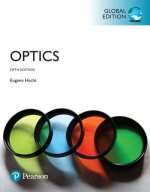
Optics, Global Edition
2284 Kč -
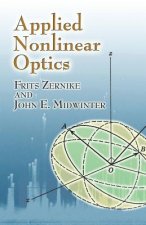
Applied Nonlinear Optics
343 Kč -
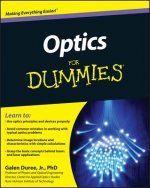
Optics For Dummies
471 Kč -
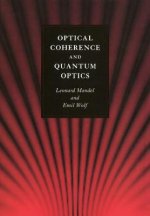
Optical Coherence and Quantum Optics
3194 Kč -

Modern Optics, 2nd edition
1621 Kč -
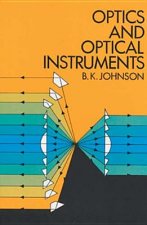
Optics and Optical Instruments
326 Kč -

Book of Shadows
524 Kč -

Color - An Introduction to Practice and Principles 3e
3503 Kč -
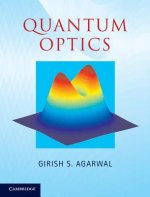
Quantum Optics
3515 Kč -
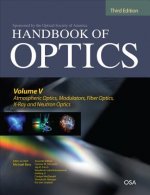
Handbook of Optics, Third Edition Volume V: Atmospheric Optics, Modulators, Fiber Optics, X-Ray and Neutron Optics
6015 Kč -
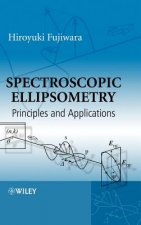
Spectroscopic Ellipsometry - Principles and Applications
7466 Kč -
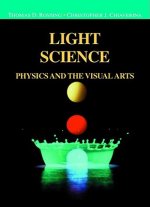
Light Science
3017 Kč -

X-Ray Diffraction
574 Kč -

Vacuum and Ultravacuum
6712 Kč -
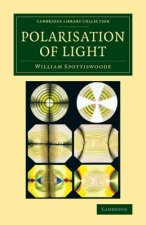
Polarisation of Light
861 Kč -
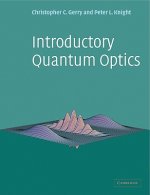
Introductory Quantum Optics
1927 Kč -

Schrodinger's Kittens
276 Kč -
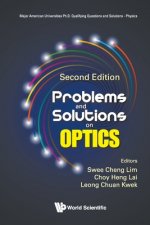
Problems And Solutions On Optics
1492 Kč -

Solved Problems in Electromagnetics
3611 Kč -
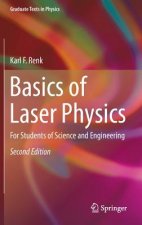
Basics of Laser Physics
4204 Kč -
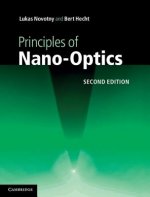
Principles of Nano-Optics
2936 Kč -

Fundamentals of RF and Microwave Techniques and Technologies
5172 Kč -

Practical Opto-Electronics
5391 Kč -
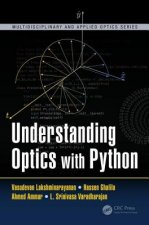
Understanding Optics with Python
5181 Kč -
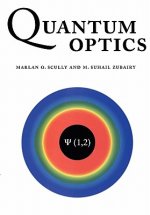
Quantum Optics
4440 Kč -

Compact Sources of Ultrashort Pulses
2125 Kč -
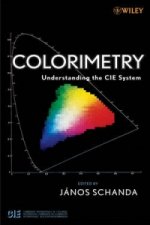
Colorimetry - Understanding the CIE System
5434 Kč -
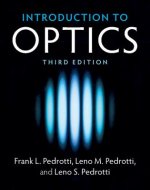
Introduction to Optics
1752 Kč -

Basics of Holography
2820 Kč -

CO2 Laser
3017 Kč -
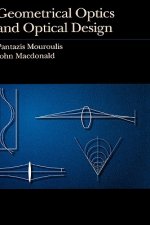
Geometrical Optics and Optical Design
8202 Kč -
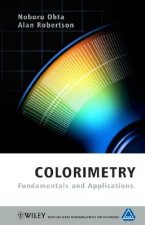
Colorimetry - Fundamentals and Applications
3725 Kč -

Spectroscopic Ellipsometry and Reflectometry - A User's Guide
5638 Kč -
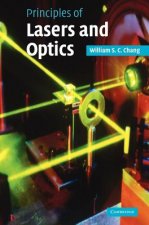
Principles of Lasers and Optics
4932 Kč -
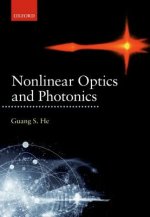
Nonlinear Optics and Photonics
3637 Kč -

Game Engine Gems 2
2406 Kč -

Physics and Chemistry of Color 2e
6494 Kč -

Introduction to Advanced Electrodynamics
3907 Kč -
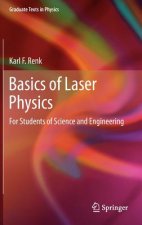
Basics of Laser Physics
1424 Kč -
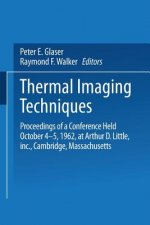
Thermal Imaging Techniques
1681 Kč -
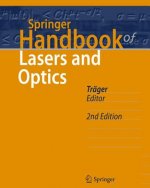
Springer Handbook of Lasers and Optics
10603 Kč -

Handbook of Optical Metrology
3059 Kč -

Terahertz (THz), Mid Infrared (MIR) and Near Infrared (NIR) Technologies for Protection of Critical Infrastructures Against Explosives and CBRN
4543 Kč -
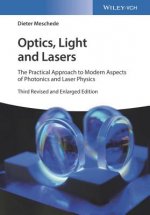
Optics, Light and Lasers - The Practical Approach to Modern Aspects of Photonics and Laser Physics 3e
3755 Kč
Osobní odběr Praha, Brno a 12903 dalších
Copyright ©2008-24 nejlevnejsi-knihy.cz Všechna práva vyhrazenaSoukromíCookies



 Vrácení do měsíce
Vrácení do měsíce 571 999 099 (8-15.30h)
571 999 099 (8-15.30h)